
|
See also our Frame Wars page. |
Note: This editorial spoke to market, megapixel and money conditions present in early 2008. No HDSLR cameras were in existence then, but some had been planned. Skip to the bottom for a more modern view of full-frame cameras. Wholly Grail? Bigger is Always Better. End of Discussion.
Gotta have a Full Frame DSLR! Gotta, gotta, gotta. It's OBVIOUSLY the best idea since English Muffins with honey and peanut butter... [Wake UP! --fingersnap, fingersnap-- The idea of full frame 35mm is older than airplanes! And just look how far those have evolved!]
Out of Box Experiences Digital photography forced an out of the box experience all its own. Kodak was there, too, Big Time. In fact, the only thing left of the original box was the darkness inside it. The first 1.3 megapixel image chips were mounted inside a Nikon F3 body, but the chip was small compared to what the camera had been designed to capture, so the picture didn't match what the camera would have produced if it had followed its destiny as a 35mm SLR. Making image chips is not simple, nor easy, nor cheap to do. They hold a huge number of precisely drawn metal, silicon, insulator, light filtering and optic details in every square micrometer. Making them stretches technologies to their limits, and making them perfect is nearly impossible. Each photosite ideally behaves like its neighbor, but errors in fabrication are frequent enough to shatter that dream. Making image chips big is an exercise in frustration. They're never going to be 100% perfect, so steps need to be taken to repair underperforming, damaged or dead photosites as the digital image is formed. The question soon becomes "how many mistakes can you compensate for, later?" Digicams contain customized lists of underperforming pixels just to track those flaws.
Since DSLRs are built--traditionally--on existing 35mm SLR hardware, the natural extension of 35mm film history has become the driver of the desire to make the ultimate image chip: the Full Frame chunk of silicon that achieves exactly what Tom, George and Oskar dreamed up before 1906. In other words, their 100 year old set of design parameters is what is propelling the current lust for DSLR perfection. After all, the whole world knows exactly what to expect when they hear 50mm lens, 28mm lens, 135mm lens. Don't they? When I first wrote the phrase "Status Quomentum," I was trying to convey how social trends are like physical objects in their resistance to change, but this DSLR thing is out of hand.
If you're like most people, you can't. Only one photographer in ten responds to that challenge within ±5% of accurate. As a group, they overestimate the coverage. They make it wider than it really is. Sort of a Field Of View Optimism creeps in, and the average area the most practiced people point to is about equivalent to a 42mm lens. Oh, by the way, that 50mm lens covers a 40 degree chunk of view, horizontally, and that's quite a bit smaller than most people guess. Normal lens, pfffft.
So much for great expectations. The point is that the existence of optics made for the 35mm film medium is the reason people lust after a Full Frame digital SLR. You know--so they can recycle the pre-existing optics into their new DigiBody and get all the benefit from lens purchases made in 1998, 1994, 1987 and 1982. And the most common excuse supporting that comes in the form of "Look how good those lenses are. How well they cover the frame. How wide they cover." Moderator # 1: Image quality. Lenses for 35mm cameras are, on average, much sharper in the center 2/3 of their coverage than out at their edges. And that includes the wide angle lenses, too. Moderator # 2: Frame Coverage. The corners of most lenses are dimmer than the centers. By 1/2 to 1.0 full stop! That wonder-wide-angle optic of yours is very likely softer and dimmer in the corners than in the center 2/3 of the frame. Are you sure you want to send its image onto your full-frame chip? Moderator # 3: Width. While it's true that a Full Frame image chip intercepts the whole picture a 135-format wide angle lens projects into the camera, is the Big Reason you need a Full Frame image chip that you need to recycle your already-owned wide angle lenses from yesteryear? If so, I've got a killer VHS machine I'll sell you for $2500! I guarantee it will get the absolute best possible image out of your pre-existing VHS tapes. Would you buy it? The clues here are several, all piled on top of each other. Cutting to the chase, it comes down to this: For the price of a Full Frame DSLR camera body, you could buy a wonder of a smaller-format DSLR body and several fabulous wide angle optics made by more recent computer design algorithms and fabricating techniques that produce about equal or better pictorial results on your smaller image chip. Your files will be smaller, your computer will seem faster and your only loss--in a practical sense--will be bragging rights.
Higher lines indicate greater performance.
What's it all mean? Here's my opinion: The whole idea of a Full Frame chip isn't a bad one, but it isn't The Answer to anything essential. B'b'but what about pixel count? Isn't that SomeThing? Yea and nay. For example: I'm very disappointed in the Canon 5D low-end full frame camera body. It represents to me how to throw $3,300 (MSRP) at one idea (12.8MP Full Frame) while forsaking a double handful of better ideas that are already embedded in the earlier Canon 20D and later 30D (newer optical prescriptions available, lower cost, faster flash sync, lower cost, more shooting modes, lower cost, lighter weight, lower cost, faster frame rates, lower cost, longer battery life, lower cost, on-board fill flash, lower cost, smaller file sizes--and did I mention, lower cost?). So for that premium price you get a slower shooting, less fully-featured, heavier, slower flash sync, no on-board flash camera that can't use the newest, sharpest optics, and the advantages of nearly microscopic signal to noise in each photosite, plus more of them, a slightly brighter viewfinder and the satisfaction that you've filled an arbitrary frame size nearly 120 years old. Now that the multi-talented EOS 40D is afoot with its 10.2MP imager and a whole SLEW of extra features and capabilities, it's clearly a decision between a dumbed-down full frame camera and a much more capable APS-C camera for half the bucks. Canons EOS1Ds Mark III (pronounced ei-yi-yi) has twenty two big ones. Megapixels, that is, all lined up in their Fullest Frame camera yet. But the cost for all that pixel power isn't cheap. Eight thousand dollars. Plus lens. And it's per-pixel noise performance is not as great as full frame cameras with fewer pixels (although with more pixels, the effect of grittyness is diminished somewhat because the grain is finer). How about diffraction? Doesn't that count. Yes, and avoidance of it is a worthwhile goal, but the diffraction limits between your full-frame 12.8MP camera and an APS-C frame 10MP camera is only about 0.7 f-stop. You paid WHAT for 2/3 of a stop of diffraction threshold and 3MP? In order to give you the magic Full Frame Experience at low dollar count in the 5D, Canon has indulged in a very Aztec sacrifice: They've cut the heart out of a 30D, put a gold head dress on the carcass and offered the results up to the gods of commercial marketing. Perhaps I took that a bit too far. Way too far. But you get the point. Another, better way to state it might be: The Canon 5D is a nice, basic full frame camera with more emphasis on pixel count, ability to recycle lenses originally designed for full-frame film cameras, lower diffraction than APS-C models and modestly better noise characteristics. To achieve this at a $3000 price point, Canon did away with convenient on-board flash. (Contemporary prices for the 5D are much lower than the original $3000 figure. March 08 sees about $2000 after rebates.) Of course, the Full Frame 5D has the ability to print out an image with about the same per-square-inch definition filling a sheet that is 27.5 inches wide versus the 20/30D's "mere" 22 inch wide print, but as the test reviewers demonstrate, the full frame-ness of the camera is nice, but is it worth a 275%+ premium? I shouldn't pick on Canon. They are serving a market demand and gaining the high ground of bragging rights at the same time. Nikon is watching this whole thing with cocked eyebrows and their D3 with 12 megapixels in a full frame format delivers things that even Canon's DsMk3 won't: Faster motor drive, up to 11 shots per second in moto mode. The Canon EOS 400D (Rebel XTi) has a 10.2MP image chip and it costs a whopping $799 for the body in black or silver (less in summer '07). What does that do to your 5D? Nothing, directly, but it does make spending $2500 for 2.6 extra megapixels of image a little rude. By the numbers, the 3888 pixel wide image of the 400D makes pictures at least 89% as wide as those from the 5D's 4368 pixel wide image chip. And the 400D is within 1/3-stop of the 5D's diffraction limit. When compared to the retiring Nikon D2Xs (excess... get it?), which has an APS-C sized image chip (about 67% of the linear dimensions of a full 35mm frame) with virtually the same pixel count as the 5D, results are so close you couldn't tell the two apart unless you were told which was which. The D2xs costs more than the 5D but shoots at 5 fps / 8 fps (in a clever 6 MP crop mode) and includes virtually every hyper-pro feature in the book (but also no on-board flash). So one kind of buying decision comes down to: Pay a bit more for the thoroughly Pro camera or get the stripped-down full framer? Each digicam is what it is. An assembly of technologies that deliver images to people skilled in their use. Each design sells for a price that reflects the difficulty of fabricating the tool versus the price the world will pay to own it. When it comes to considering the practical, operational, feature-laden, deliverable results between the 5D and its brethren, the voice in the back of my head says, "Buy the EOS 400D, Luke!" Then it echos softly, "Pocket the two and a half grand, Luke!" Or go with nearly the feature set of the Canon DsMk3 with the 40D for $1300US. It will save you $6,700 over the Ds. That will buy you a closet full of optics. Pixel count. There's your Holy Grail. Huge printers. There's your other Holy Grail. Because until you get a HUGE HONKING PRINTER** you're going to miss out on virtually every echo of the amalgamated Full Frame Lust that your all too often irrational subconscious keeps telling you is real. To appreciate the output of the Canon EOS1Ds Mark III, you better buy a printer that stands upright. No desktop printer will show you everything that camera and its mega-prime lenses can capture. If you can't actually print the 5616 pixel wide images onto paper 24 inches long--at minimum--you're never going to realize full-size blowups from your 21.1MP images. Buying a printer to do that will set you back around 2-2.5 grand (US dollars), just to show your efforts at maximum impressiveness. So that $8000 camera body just cost ten grand. Minimum. 96.2% of EOS 5D (and D2Xs) owners don't own a printer this large. But virtually all (meaning over 50%) of 10MP camera owners have tabloid or Supertabloid printers at their elbows. For our eBook on the 6MP 300D camera, we recommended owners get a larger printer, and shots from that camera seen at 18 inches wide are impressively sharp and well detailed. Shots from the 400D are even better, as are the results from the 40D. At this point in the digital photography evolution/revolution your images have already acquired a staggering suite of feature benefits with any digital camera gathering 2000 x 3000 pixels or greater.
Conclusions #1, #2. #3 and #3.5: 1. Sheer pixel count truly is a Big Deal. Up to a point. And because packing them in is directly related to surface area, the existence of Full Frame cameras will always allow 200+% more photosite opportunities and marketing departments won't ever let you forget that. 2. More pixels mean greater real estate to crop among. You could, for instance, crop a dandy 6MP image out of the 5D's 12.8MP image and print it big. The same applies to the 400D, 40D and Nikon D200, D80 and D40x. 3. Larger surfaces naturally allow larger photosites and they are--all technologies being equal--lower in noise than smaller ones. Canon brags that the 40D has an even better tweaked 10.1MP image chip over the 400D. We shall see, but this sort of improvement is almost expected. 3.5. Following these positives by half a point is the diffraction relationship. 1/3 of an f-stop better lens closed down performance from the 5D. Whee. 2.7MP + 1/3 f-stop of diffraction limit = 200% to 600% in price premium? Not in my wallet. Full frame differs from APS-C frame models in four areas:
And there is one more, which may or may not affect you:
Balancing that a list of real-world countervening realities: > Image sensor chips are already above lens performance in many designs. Modern computer-aided lens design refinement is targeting smaller sensors because that's where the economics of advanced performance lens design is biased. > Prime lenses with FF performance are rare. Canon's own new 14mm ultra wide prime fills this niche, but it is $2,200US per copy. > Bigger pixel counts trade off picture resolution for speed. The DsMk3 shoots only five frames per second. Nikon's FF (D3) with its 12MP FX format chip shoots seven frames per second and in crop mode to DX lens coverage, it shoots a 6MP image at 11 fps. My question is this: When do these cameras become movie cameras? -iNova (End of Rant. Or is it?) Addendum A: Silly me. I've missed--through inexperience--one of the problem area that users of FF cameras have been discussing among themselves. An issue that seems more important in practicality than was appreciated is this: Geometry+photosite design+lens physics+mount physics+photon impingement angle. How could I have overlooked it?
Rollover the image to add photon tracks. But every lens has its own focal length. Meaning that the angle of light rays from a telephoto lens and those from a wide angle lens are as different behind the lens as their angles of view are in front of the lens. In general, wide angle lenses paint their photons into the corners of images at a MUCH more acute angle than do tele lenses. So what? As light slams into photosites at an angle, they encounter several layers before banging into sensitized silicon. A clear "retarder plate" to confuse any residual polarization (don't ask), a clear, but mildly diffused "antialiasing" filter, a color filter, sometimes an anti-moire filter and an array of microlenses precede the sensitive patch of each photosite. Where all this becomes something of a problem is in its eventual real-world behavior at the photon level. The microlens atop the photosite is designed--in current technologies--to concentrate the totality of photons streaming into the whole area of the photosite onto its far narrower sensitive area in the center of the tiny photosite. It's a simple lens--a dome of refractive material designed to steer photons from the edges into the active center. Not seen in the artist's diagram above is the factoid that only about 10% of the photosite's area literally responds to light. Light arriving at an angle to the centered microlens isn't as efficiently steered into the photosite's sensitive center. Add to that the factoid #2 that wide angle lenses don't have corner coverage as bright as their optical center coverage--a different kind of optical phenomenon, but always a consideration in wide lens design--and a common result is that full-frame images increase corner vignetting with certain legacy wide angle designs. Film surfaces don't have these issues. Film is a flat, somewhat matte surface, every square micron of which is photosensitive. Well, wasn't the Big Reason to make FF chips in the first place to be able to recycle all those previous purchases? Or was the Big Reason to give the previously all-film photographer the same depth of field he was enjoying in 1989? With every solution comes its own problem. The new Leica M8 digital rangefinder confronted this issue--and it isn't even a full-frame camera. Because of Leica's basic design geometries, the back elements of Leica lenses are considerably closer to the image plane than those in typical DSLRs. The M8's designers realized that the standard microlens idea was going to produce a host of negative results, so the very special image chip destined for these cameras would have to incorporate technologies that specifically allowed severely acute light ray angles so photosites would be better served. Image from Leica brochure. 1. Photosite. 2. Center rays. 3. Corner or off-center rays mated with off-center microlens. How? By designing the microlens overlay to deal with a different set of assumptions. Each microlens is NOT centered over its photosite. As the array of microlenses progresses away from the chip's optical center, the microlens itself is progressively closer to center by small amounts. In other words, the microlens array is slightly smaller than the photosite array, but both are in-register at optical center. And who makes the chip? For readers who started with the opening paragraphs of this page--yep. Kodak again. (And wow, was this a Big Hairy Problem for Leica. The first cameras had to be recalled to fix the way-underperforming image chips with a re-designed microlens overlay system. Every solution generates its own set of new problems.) This is fine for cameras that will never be used with a 600mm lens. One can design the lens-to-photosite geometries optimizing for wide to modest teles--all of which are Leica design standbys. Leica's longest lens these days is the Leica Apo-Telyt-M 135mm f/3.4. Where all this meets the realm of practical reality is this: current FF camera owners are often--but not universally--aware of vignetting and softness issues in the corners of their images, particularly with wide angle, legacy optics. Modern wide zoom designs targeting DSLRs can be--and often must be--designed around retrofocal optical principles, meaning that the rays streaming out their backs are not at the acute angles so often seen in legacy wide angle designs. And, as noted previously, new optic design principles, computational tools and manufacturing techniques are much more able to create superior lenses than those even a decade old. Perhaps FF camera owners will be assuaged by knowing that the DOF from 1989 has been preserved. -iNova (Still ranting after all these years.) Addendum B: A reader has called my attention to the notion that the Canon 5D viewfinder is a Big Deal in its brightness and image size, making it a definite feature benefit that directly results from its inherent full frame-ness. And it really is a great viewfinder by any standard. At the physics level alone, it has twice as many photons flowing onto its much larger ground glass at any given f-stop, so making it brighter is an easy result to design in. The question is not so much how much better full frame bodies can make their viewfinders, but why are the viewfinders of lower-cost models by the same manufacturer dimmer and smaller? And why are the viewfinders of APS-C chip cameras made by competitors often big and bright? Penta mirror finders (Rebels, for instance) are cheaper and dimmer than pentaprisms (5, 10, 20, 30Ds). But one thing that isn't obvious: The influence of Marketing Departments. Meaning: intention. Intentionally placed attributes that allow feature/benefits to be touted in press releases are a staple of the industry. Example 1: The EOS 350D image and EOS 20D images are created from the same silicon chip, but the 350D's pixel count is intentionally cropped smaller by 48 pixels wide and 32 pixels tall so the Marketing Department could claim that the 20D's image was Bigger. In other words, they intentionally crippled the 350D image by 1.4% just so they could make that claim in forums of information delivery that offered no clarifying dialog. "Of course you want the 20D over the 350D. Don't you know that it delivers a BIGGER image? You poor fool." Canon is very distinctly not in competition with themselves. They have no marketing need to provide 20D, 30D, Rebel, Rebel XT and Rebel XTi with viewfinders that compete with their flagship FF cameras. When the 10D was king, the first Rebel had a very truncated feature set that kept it in its place, and obviously could have been widened for 30 cents and a few software tweaks. Example 2: Hackers found ways of tweaking the Digital Rebel into greater performance without changing a speck of hardware. You could download and install non-factory software into the camera that unlocked inherent capabilities Canon refused to let you have because the perception of a cheap camera with remarkable extra abilities didn't fit the Marketing Department positioning decisions at the time.
Remember as you shop for technological devices that the feature set, ergonomics and qualities of everything you interface with was PUT there to position that device at a certain point within a Product Line. Product Lines are the co-territory of Marketing designers, not just engineers. Those features and qualities weren't put there to stretch the technologies and feature-benefits to their maximum. The designers are balancing their estimate of your perceived value against the minimum they can do to meet that perception head-on and give you enough to want to buy it, not enough to compete with the next model up the line. Canon has saddled itself with an Elephant in the Room. They've held onto Full Frame as being the Ne-Plus Ultra feature and the only machines deserving certain technologies, features and wonderment, so they intentionally design their lesser products to house somewhat lesser performance. Until the 5D, which was conceived as a FF camera for the masses, and Canon hoped that FF would lift the camera to soaring new heights even though it didn't offer some of the features of its 8MP predecessors. In its way, it was the first FF Rebel. How are sales? Did you use the $300 rebate March 2006? Or the $700 one for autumn 2006? In summer, 2007, the body price has dropped to about $2600 from the more expensive on-line retailers. Their follow-on model offers 10.1MP and a less-than full frame image chip. The EOS 1D Mark III requires lenses from full frame SLRs to cover its non-APS-C image, while eating one's 28mm lens down to about 36mm equivalent coverage. That very nice 10-22mm wide angle you bought for your 20D won't work with it without vignetting. It does have 10fps, though. Could this be a marketing gaffe similar to the 30D? Time will tell. Canon's perception of the world is getting a course in the college of life. Reality is setting in. The Rebel XTi/400D is something of a fluke by delivering much more than its price suggests and it definitely competes with the 30D, but the 30D was a market share holding attempt that probably should have been called the 20Di, 21D or some such. The decisions of the 1. 5D as a low-cost FF 30D minus some essential features, 2. 10MP 400D trumping the up-line 30D and
3. 30D itself being really a 21D and
4. 40D providing a smaller picture than the 450D ...leads us into the valley of the shadow of confusion. We don't have a lot of faith at the moment in the Good Decision factors being earned by Canon's Marketing Department. Perhaps their Grand Plan will become obvious over time. In the past, they have shown sheer brilliance, but more recently seem to be adrift. And their Elephant in the Room is that 5D. --iNova Addendum C: The contrarian view to my Rant is afoot. Mamiya has begun to release the Mamiya ZD, a large-format digital camera that features a 48 x 36mm single slab of silicon that captures 22 MP images. They've been promising-testing-evaluating-chatting about this camera since 2004. How long is that in computer years? Implication: The larger the format, the slower the technology development & improvement rate. Evolution craws as pixel count rises. Say, didn't that hold true for full-frame digicams? Released first in Europe for €10,000 or £7,000, the Mamiya will cost around $13,000US when it makes it here later in the season. Like most large-format cameras, this is not your first choice for candids and quickly evolving situations. Its image map is 4000 x 5328 pixels--in an area exactly double the physical size of a full frame 35mm film image. Since the Mamiya lenses are generally designed to cover 45 x 60mm, this camera represents a similar "crop factor" or "magnification factor" as is found in non-full frame DSLRs. Presumably, that means you need to think of lenses as being 125% of their native focal lengths. With 4000 photosites in the short 36mm dimension of the image chip, each photosite shows up at 9 micrometers square. For comparison, the photosites in a D70 are about 7 micrometers square and the one in a D200 are 6 micrometers square. Canon's D5 has photosites just a hair over 8 micrometers square. Forgive me, the phrase "just a hair" is not really applicable here since you can fit around ten of these across the width of an average human scalp hair. The 4000 x 5328 pixel map is huge. But what I want to peek at is the per-pixel resolving power of the available optics. Unless the lenses are right AT the resolving limit of the chip--and that means in the 9 micrometer zone--then all those megapixels and all the extra time to sling them around inside the computer will be like the California vanity plate: "ALL 4 0" [all for naught]. Hmm. I wonder if Mamiya will get into the "digital lens" game with special wide optics made especially for the tiny 48 x 36mm format (60mm diagonal). It's a 3:4 aspect image and at 22 million pixels, it's bound to be quite detailed. Don't even THINK of printing these images smaller than SuperTabloid size. Go out and get a printer at least three feet wide. Photographers who require 22 MP images work with lower DOF, bigger studio flash units (it takes a lot of light to work at f/22), carefully controlled environments and bigger budgets. With a $20,000 rig of lights, camera and action to pay off, they're not as inclined to work on spec or be tremendously experimental. And with a continuous frame rate of 0.8 seconds between shots (1.2 fps), this is not going to be your jiffy-cam. Minutes equal euros. In the camera, in the computer, in the print and in the layout. And what do 22 MP images eat? Minutes. So maybe the big 11, 12 and 16 MP full frame DSLRs have a bigger role in the world than I have been railing against. They ARE the bigger format cameras of the evolving digital era. And for the price you will plunk down for that Mamiya, you could get the Giant 16.7 MP Canon EOS-1Ds Mark II and a closet full of lenses. But you'd still have to buy a flash. Questions for the discussion group:
-iNova (Building a rantway to heaven.)
Whoops. Will technology ever settle down? Now Hasselblad has a 39MP image chip in the new H3D camera. It's a 36 x 48mm sensor back that works with the FlexColor software we none of us know and love. Featuring a new 3F RAW image format (3FR), its lossless compressed images save a whopping 33% on storage space. 7212 x 5412 pixel image files that would have been a whopping RAW 78.1MB are trimmed down to a positively tiny 50MB. Easy as wedding cake. Did we mention that the 3FR files are 16-bit?
One shot every 1.8 seconds. 35 each minute. That just about fills a 2-Gig CF card. Now THAT's a full frame camera. Cheap at just $40 grand (approximately). The 31MP version is a modest $25 grand, US, street. Check out a more complete story here at Photography Blog.
On August 20, 2007, Canon brought out its biggest FF gun to date. The EOS 1Ds Mark III DSLR has a new CMOS image chip delivering a 21.1MP image into 5632 x 3750 pixels per shot. At a reasonable 180 ppi, that means a picture 31.28 inches wide that you can put at reading distance. Smaller pixels, in this case, about 6.4µm square, mean an earlier onset of diffraction limits, but still, you can shoot at f/11-ish without seeing any issue at all. (You probably won't experience any significant "issue" with diffraction until you are over the numerical diffraction limit by a full stop, on any camera. Rule of thumb.) Just for perspective, each millimeter of image chip contains over 156 pixels, shoulder to shoulder. If you save your image as a TIFF file, it will be 21,120,000 pixels times 24 bits, or around 63.4 megabytes. But the camera hangs onto a 14-bit image in RAW (at 25-ish MB per click). It takes eight channels of computation in two Digic III processors to sort out each image. Other features: 5 fps in continuous. A novel smallRAW (sRAW) half-scale image option (14.5-ish MB per click). Uploading custom response curves. 45 focus points. 63-zone matrix metering. 3-inch monitor. ISO 50-3200. Live View output for the joy of sharing. The image chip has a version of the EOS Integrated Cleaning System, which shakes off dust for 3.5 seconds every time you swap lenses or power up the camera. While not an underwater camera, if it rains on your parade while you shoot, you still keep your soggy parade images. 76 water seals keep the camera working in nasty weather. It still doesn't have a built in flash. That would have cost too much, and they were trying to keep the price reasonable. A mere $7995.83US plus tax, lens and professional photographer license.
Not in the negative sense at all. Nikon's D3 for 2008 is a hot explosion of features in Nikon's new FX format, meaning full frame coverage. Yes, it recycles prior 35mm film camera lenses, and handles most legacy Nikkors in various degrees, but it jumps forward technically with a bomb bay full of super-professional features. 12.1 MP. Just twelve mega? What were they thinking? Actually they were well grounded in the real world with this decision. As was Canon with the 5D in its day. 12MP is a bigger image than any magazine page you can buy today. So was 10MP, but that's another story. Twelve megapixels is a nice sweet spot that matches well with today's technical points like image size detail, computer speeds for post processing, diffraction limit and some surprises that Nikon has adopted as their own. ISO speed, for instance, in DSLRs rarely lifted above 800 if you were seriously trying to look clean. D3 shots take this up two more stops to ISO 3200, and if you wish to push things, ISO 25,600 is available, and pushing this two more stops in the camera using the iNovaFX RAW image doubling technique is possible. Now gritty, but usable ISO 100,000 is in your hand. The story behind that is the native low noise of the D3's large sensors. Here's a full-frame camera that delivers a huge practical benefit due to its large photosites. At 8.4 microns per pixel, individual photosites are way lower in noise than any prior image chips, making the astounding in-camera ISO 104,000 possible (aided by a little know-how). It's fast, too. Shooting at up to 9 fps, this is the sport photographer's object of lust. And at $5,000 it's still much less expensive than Canon's big gun.
Here's another Nikon DSLR to balance your mental wrangle: A 12.3MP contemporary to the D3 with a few more pixels, but in DX format. The smaller chip isn't quite as noise-free, but ISO 25,600 is in the shot at right, giving a tad more capability to this much lower cost instrument. Open this shot in its own window for a larger view. The extreme ISO image is the product of an original iNovaFX Photoshop Action for the D300 that will appear in our D300 eBook, in production now (March 08). We mention it here for comparison. The D300 can be working for you with exceptional speed (in ISO and 8 fps --with battery base), stunning images and features, plus an on-board flash with Nikon's Command Mode system. You GET a lot more camera per dollar with the D300. It even delivers large 12MP Compressed RAW images that nobody on Earth can tell from the 14-bit uncompressed ones with a HUGE savings in card space. About $1800. Or how about the best up-size compromise, yet. The Nikon D700. Delivered, July 2008. Full frame, but the same chip as in the D3. A $3000 thoroughly pro camera with all the bells, whistles, performance, weight, features and flash of the D300. Really, it's poised to accept the D300's five stars from sheer inheritance. At this point the 12.1 MP of the D700 and 12.2 MP of the D300 are in a face off. You get to decide how much that full frame is really worth to you, because the apples to apples bodies offer a level field for comparisons. But it IS $1200 more clams. And the benefits are ISO 12800 and 25600 if that rilly, rilly stokes your furnace. The head to head comparisons to the Canon 5D are inevitable. I leave them completely up to you. * Full frame war, FFW, fought between 1998 and 2017 between the ImRights and the NoWays. Many were called to the front. Fortunately, there were no fatalities. Famous quotes: "Damn the pixels, full speed ahead," "Photons? We don't need no stinkin' photons!" and "Oh, the opinionation, the opinionation." ** Huge Honking Printers of the caliber that can reveal the advantages discussed start at $2,000 and rise in price often by adding nothing more than zeros to the price. How do you pronounce "Giclee?" Much has happened since the original rant took shape. Two significant trends have matured. Pixel counts have grown up to 300% and the tsunami of HDSLR features have washed over the DSLR industry, altering it forever. Nowadays, your cell phone makes better pictures than the camera that shot The Wizard of Oz. We are no longer in Kansas. Canon sells its 5D Mark II for under $2,500. It shoots HD movies delivering DOF characteristics previously seen only in Vistavision cameras (horizontal movie format that shot slide-sized frames). Nikon has announced its D800. A 36 megapixel camera in full-frame FX format that shoots 1080p30, 720p60 and other video formats in both FX and DX chip-activation options. Meaning that getting a 1.5X tele boost to your long lens when shooting video is just a menu click away—and no teleconverter loss of light! Technology has brought the universe of full-frame shooting closer than ever before. Where 2008 saw a 12 MP camera with less than 4,500 pixels of beltline, 2012 brings us at least one camera with over 7300 pixels longwise. And the D800 comfortably shoots up to ISO 6400 with scarcely a whiff of noise. You might consider moseying over to HDSLRreview.Com to check into things. |
|
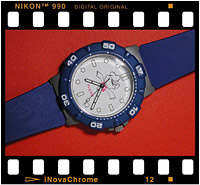 Thomas Edison sat down with George Eastman in 1891 and drew out plans on a napkin that determined why you may be lusting after the Holy Grail of a Full Frame DSLR.
Thomas Edison sat down with George Eastman in 1891 and drew out plans on a napkin that determined why you may be lusting after the Holy Grail of a Full Frame DSLR. 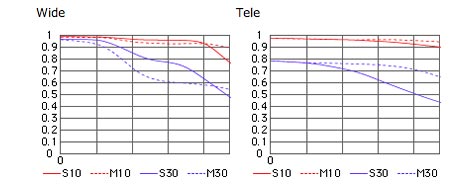
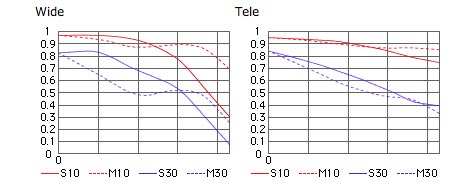
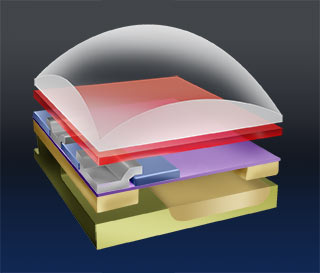
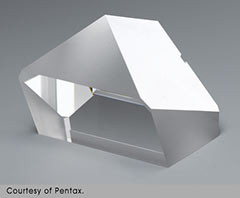 Other manufacturers who have no top of the line product to sell show us the way . It's actually not that difficult to use the lower photon count in more efficient ways and compete well with the 5D's live image. (Pentax, for instance, whose K10D managed to bury the jewel at right inside its head.)
Other manufacturers who have no top of the line product to sell show us the way . It's actually not that difficult to use the lower photon count in more efficient ways and compete well with the 5D's live image. (Pentax, for instance, whose K10D managed to bury the jewel at right inside its head.)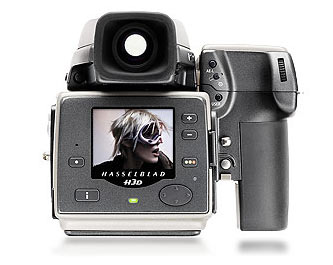 Addendum D:
Addendum D: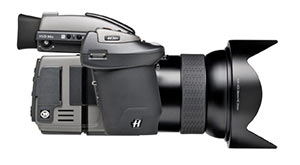 Or, if you are into 24-bit TIFFs, they're only 117MB each. Get a big card.
Or, if you are into 24-bit TIFFs, they're only 117MB each. Get a big card.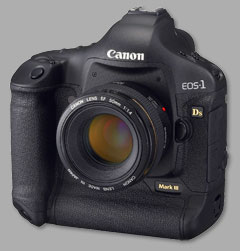 Canon's Bigger Gun:
Canon's Bigger Gun: Nikon Bomb
Nikon Bomb Just a Little Competition: 12.3MP Nikon D300
Just a Little Competition: 12.3MP Nikon D300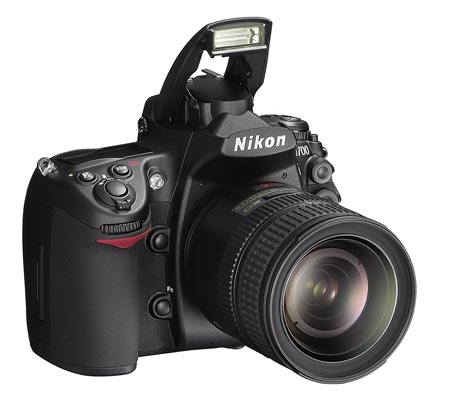
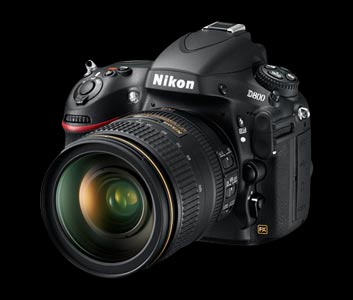 Update, 2.27.2012.
Update, 2.27.2012.